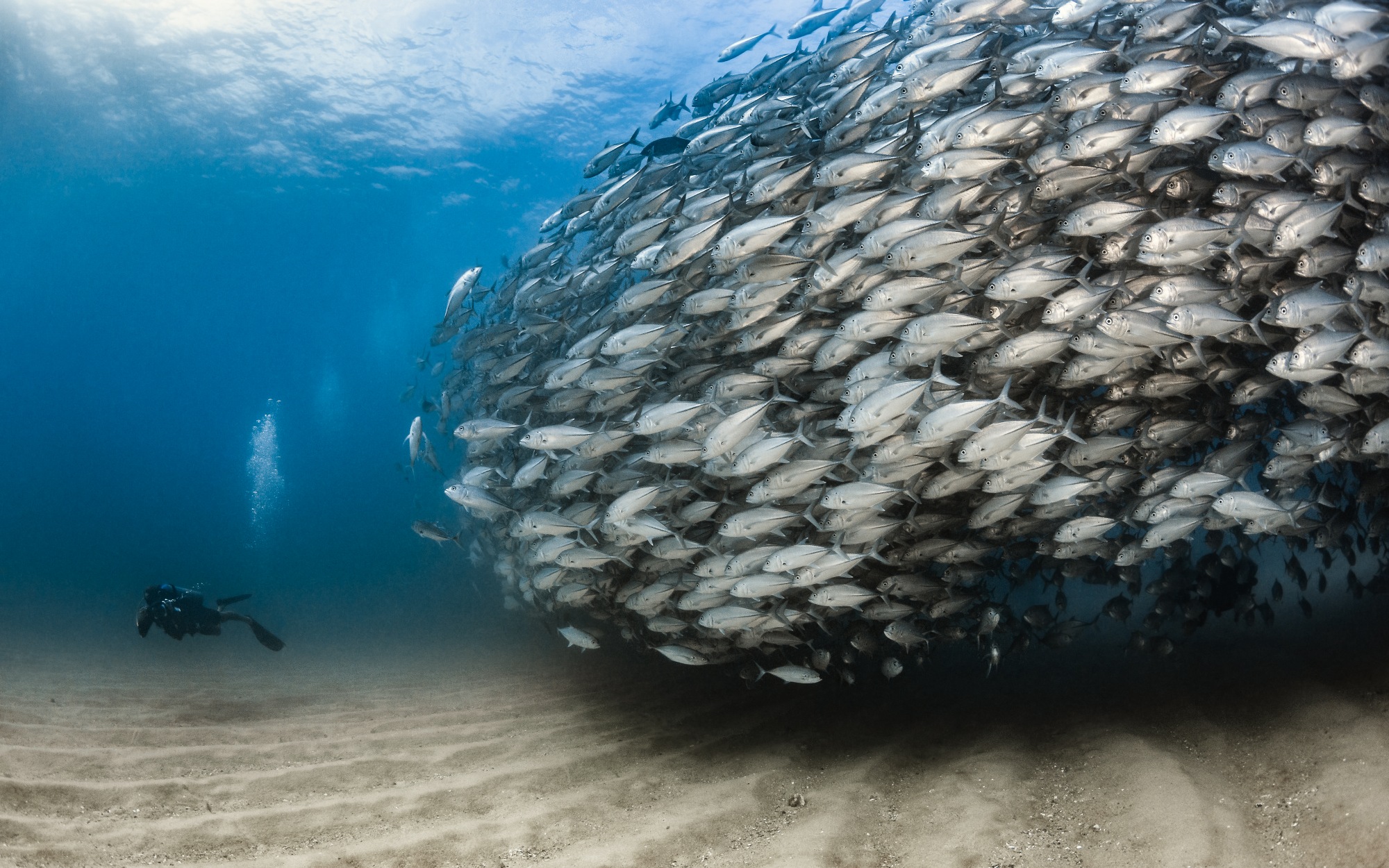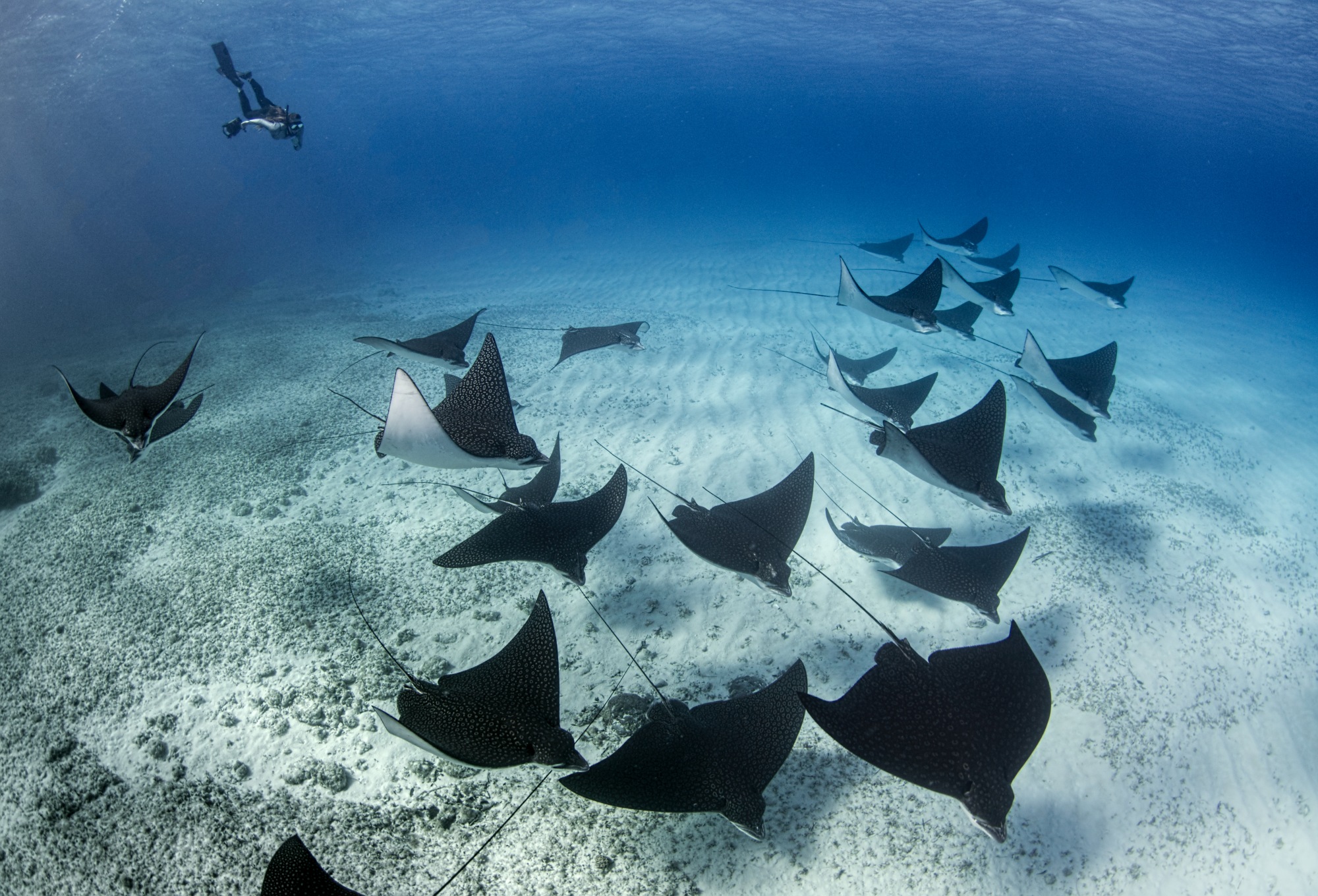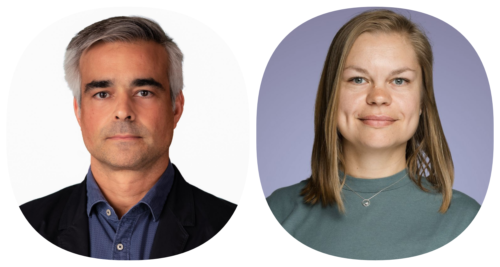Private companies and vendors operating in the ocean space collect a lot of oceanographic and meteorological data. Only a few companies realise, how important this existing data is to fill scientific data gaps, inform decision making and generate sustainable solutions. As a result, this data is often not made publicly accessible for the benefit of science, or policy makers. There are many reasons why industry today is not sharing data openly, including legal and technical barriers, or the perceived financial and competitive sensitivity of the data. Furthermore, companies don’t necessarily see the value of sharing data and aren’t certain which datasets might be required to advance our scientific knowledge of the ocean.
Improving ocean climate models with industrial data
In March 2023, Norwegian non-profit foundation HUB Ocean and the Intergovernmental Oceanographic Commission (IOC) of UNESCO teamed up to bring together ocean scientists and private companies to find out what data is needed by science and explore what the potential mutual benefits might be gained from sharing this data.
To frame the discussion, the workshop focused on ocean modelling and its role in addressing key challenges identified by the UN Decade of Ocean Science for Sustainable Development (the ‘Ocean Decade’). Numerical ocean models assimilate large amounts of data, to describe ocean processes and improve forecasting both of which are critical to develop scientific understanding and improve industrial offshore and coastal installations and operations at sea.
We discussed three tangible modelling use cases, all of which were considered to deliver business value to industry , and for which it was considered feasible for companies to provide the data, hereby filling the gaps in understanding of ocean and climate processes.
Optimising offshore designs and operations
One of the discussed use cases will improve wind and wave forecasting at time scales ranging from one hour to 20 years. The modelling results would be used to optimise offshore operations, including better planned interventions, and lower maintenance cost. The results could also help to optimise infrastructure designs, making them safer and more durable. The data required for the model included wind speed, wave heights, currents, air temperature, pressure, sea-level at high temporal resolution (e.g., every 15 min), high-resolution bathymetry (5-50m cell size) data and geomorphology as well as seabed habitats and soils. This type of data is currently collected by energy companies in real-time from their offshore platforms and is not considered business sensitive, so can be shared.

Reducing costs predicting extreme weather
Another modelling case will estimate the impact of episodic extreme weather events like storm surges, meteotsunamis, heatwaves, and others on industrial assets and operations at sea. Early warning systems and timely forecast will help industry to reduce costs, improve operational planning, protect construction, and design more robust infrastructure and ports that accounts for future extreme weather events, which will likely become more frequent with intensifying climate change. The data required for the model can be provided by companies and include variables like high-resolution bathymetry, seismic data for water currents, wind and current data along the coast, current data from surveying remotely operated vehicles ROVs, waves data from buoys and coastal ocean dynamics application radars (CODARs).
Estimating coastal shelf impact affecting people and industries
The third modelling case will estimate the impact of coastal and shallow shelf processes, like coastal erosion, sediment dynamics, and degradation of habitats like wetlands on installations such as power and fibre cables on the sea floor. This modelling is not only important for industrial assets on the coast and shallow shelf, but essential for the growing human population living by the sea and number of megacities in coastal areas. In addition to the metocean data important in the previous cases, this case requires sedimentary, tidal, human activity, and topographic data with high spatial resolution and on local scale.

Two exemplar success stories
Unlocking existing historical industrial data from decades ago is seen by many companies to be challenging, however, there are success stories of multiple stakeholders sharing ocean data when the goal of this exercise is clear. One such example is described in the paper by Thomson et al., (2014), whereby BP donated high-resolution geophysical datasets from developments in the Gulf of Mexico to multiple Universities for teaching and research to understand seafloor and shallow subsurface geology. Similarly, the MAREANO project has built data products and maps based on data shared by Norwegian ocean industries.
Reaching an open data-sharing environment
A key element of this joint HUB Ocean and IOC/UNESCO work is to help establish principles for data collection and sharing that can be included in operational planning and contractual agreements from the outset. For example, service contracts between the licensor, company and the contractor collecting the data offshore should include data management and sharing clauses. Fixed facilities like oil rigs and wind turbines can be used as observation posts and host numerous ocean sensors. Existing cables in the ocean can also be equipped with telecommunication cable recorders to gather data on noise in the deep sea, e.g. earthquakes and marine mammal communications, but also variables like temperature and salinity (e.g., Smart Cable Initiative). IOC and its new Ocean Decade Data and Information Strategy will provide support and a new guiding policy that will facilitate more data sharing activities.
Open invitation Advanced data infrastructures like Europe-based EMODnet Data Ingestion Portal and HUB Ocean’s own global cloud-native Ocean Data Platform work towards lowering the technological barrier for data sharing and flows offering an interoperable environment to upload, host and share the data. We hope that the concrete modelling cases above and increased clarity on what data is required fcould initiate similar data donation initiatives from multiple companies.
So here is our open invitation to companies working in ocean industries: to what good use can your non-sensitive data be put?

Reference:
Thomson, James A., Thorn, Barbara, and Julieta Tucker. “How to Execute a Successful Petrotechnical Data Donation Project.” Paper presented at the Offshore Technology Conference, Houston, Texas, May 2014. doi: https://doi.org/10.4043/25189-MS
Contact information:
Anna Silyakova (anna.silyakova@oceandata.earth)
Louis Demargne (l.demargne@unesco.org)

***
This article was originally published here.